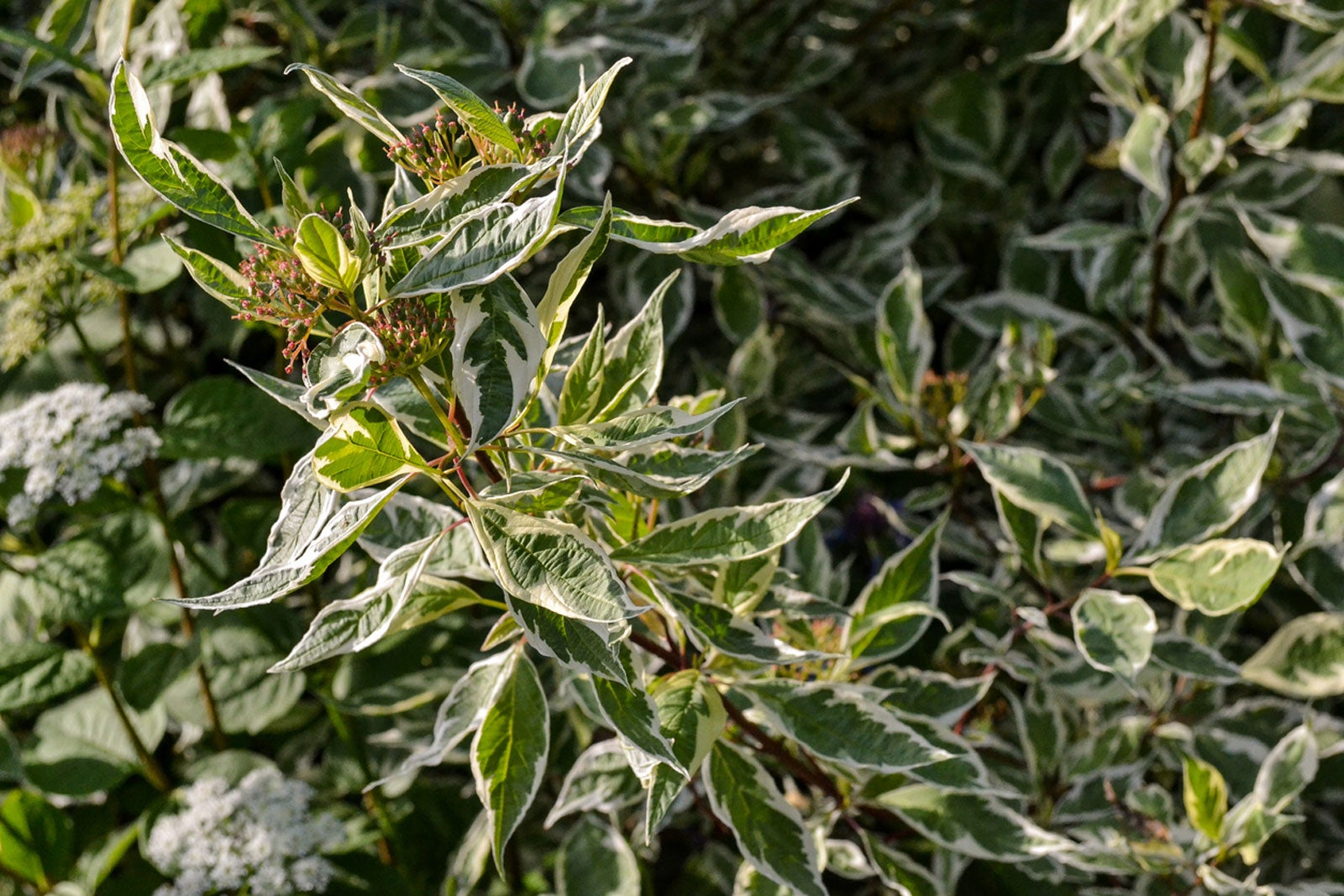Tatarian Dogwood Care: How To Grow A Tatarian Dogwood Bush


The Tatarian dogwood (Cornus alba) is an extremely hardy shrub known for its colorful winter bark. It is rarely planted as a solo specimen but is used as a border, mass, screen, or hedge plant in landscapes. If you are interested in growing Tatarian dogwoods, read on. We’ll give you information about the Tatarian dogwood bush and tips for Tatarian dogwood care.
Tatarian Dogwood Shrub Info
The Tatarian dogwood bush has a rounded canopy. It produces multiple upright stems that never grow above 8 feet (2.5 meters) tall. The plant offers something of interest for every season.
In early spring, the dogwood leaves emerge a soft, yellow-green. In late spring, the shrubs are covered with tiny, creamy, yellow flowers arranged in flat-topped clusters. These are followed by berries in summer that provides food for wild birds. In fall, the leaves blaze crimson and as the weather gets colder, the bare Tatarian dogwood bush stems turn blood red.
Growing Tatarian Dogwoods
Tatarian dogwood bushes are cool climate plants that grow best in U.S. Department of Agriculture plant hardiness zones 3 through 8. You can plant them in full sun or partial shade, but they won’t grow in full shade. The shrubs are easy to find in commerce in either container or ball and burlap form.
Tatarian dogwood bushes prefer evenly moist, well-drained soils in full sun, but they are quite adaptable and very vigorous. You can find them growing happily in wet soils, dry soils, poor soils, and even compacted soils.
Once your dogwood is established, you still need to take care of the shrubs. Maintaining the lovely winter color takes a bit of effort.
New stems provide the best color in winter. As stems mature, the red shade doesn’t appear so vivid. Many people growing Tatarian dogwood shrubs thin the stems, cutting some of the older stems back to just above ground level every year.
Gardening tips, videos, info and more delivered right to your inbox!
Sign up for the Gardening Know How newsletter today and receive a free copy of our e-book "How to Grow Delicious Tomatoes".
This pruning results in new growth with more intense winter coloration and keeps the shrub compact and upright. It also keeps the growth under control since Tatarian dogwood shrubs expand by suckering and can become invasive.

Teo Spengler is a master gardener and a docent at the San Francisco Botanical Garden, where she hosts public tours. She has studied horticulture and written about nature, trees, plants, and gardening for more than two decades. Her extended family includes some 30 houseplants and hundreds of outdoor plants, including 250 trees, which are her main passion. Spengler currently splits her life between San Francisco and the French Basque Country, though she was raised in Alaska, giving her experience of gardening in a range of climates.
-
 Looking For Plants To Give You The Soft And Fuzzies? Try These 5 Fuzzy Leaf Plant Options
Looking For Plants To Give You The Soft And Fuzzies? Try These 5 Fuzzy Leaf Plant OptionsLovers of texture, drama, silver foliage and tactile plants will adore these special sensory garden additions. These fuzzy leaf plant options will leave you all aglow
By Susan Albert
-
 Get Ready For A Summer Of Hummers! Grow These Full Sun Hummingbird Plants and Flowers
Get Ready For A Summer Of Hummers! Grow These Full Sun Hummingbird Plants and FlowersIf you’re lucky enough to enjoy a sunny backyard, make sure you are maxing out on your pollinator opportunities and grow these full sun hummingbird plants and flowers
By Tonya Barnett